Chinese Food Habits That Westerners Will Never Understand
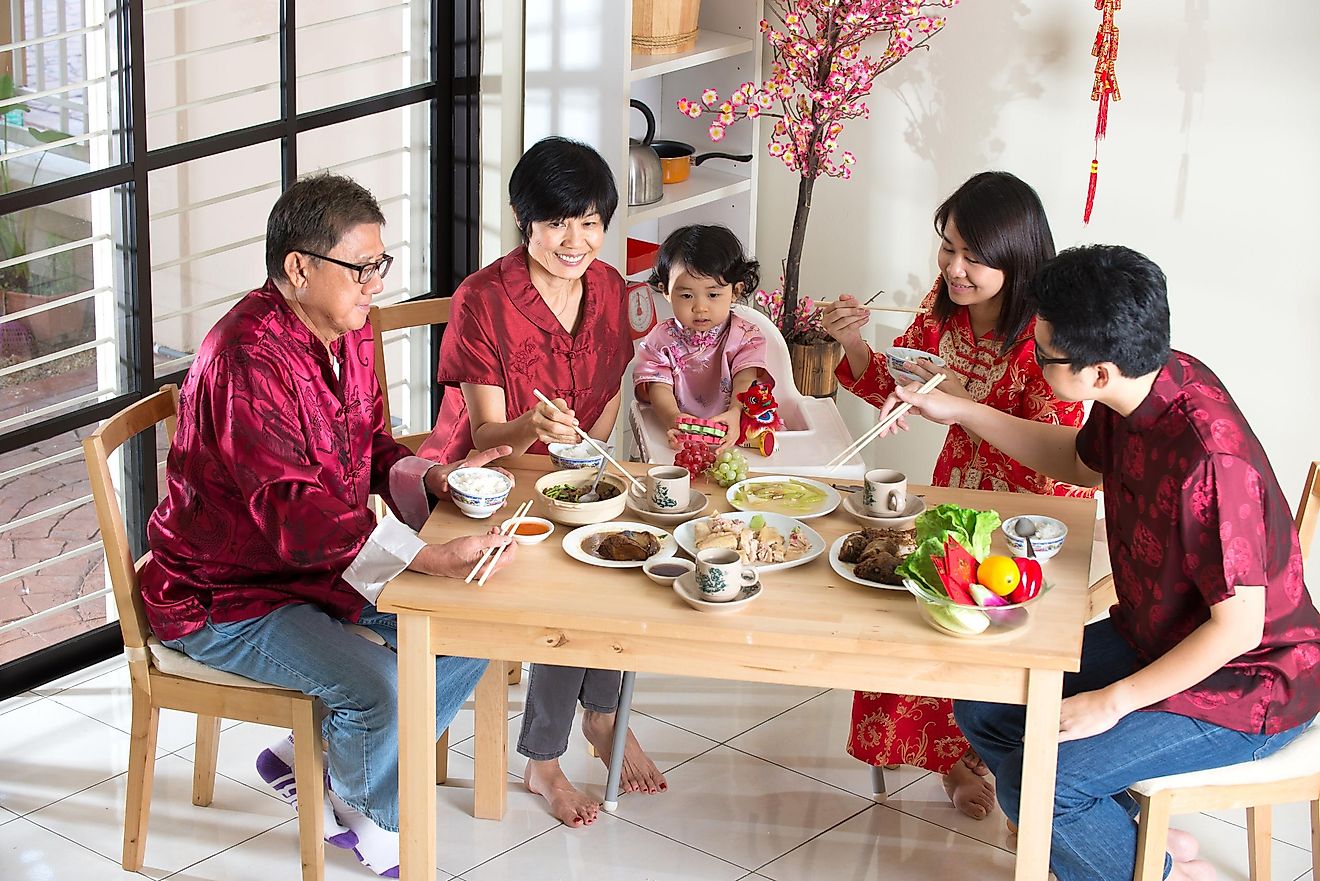
- Dessert First! Many Chinese meals begin with a sweet such as pieces of fruit or custard filled tarts.
- China is both the world’s biggest producer and the biggest consumer of rice.
- Nearly 73 million sharks are killed each year for shark fin soup. Bowls of the soup sell for $100.
When the first Americans landed in Guangzhou China in 1784, they were no doubt overwhelmed by what they saw. From the architecture to the language to the cultural traditions, Imperial China must have seemed like a very exotic and unusual location. Most exotic of all was the variety of food, which was unlike anything North Americans had experienced before. Fast forward to today and Chinese food is a favorite choice for North Americans when ordering take away, dinners on the go, or dine-in celebrations. One thing that hasn't changed, however, are the different dining traditions that take place in these two parts of the world. Read on to learn more about Chinese food habits that Westerners will never understand.
Table Settings
Seating Order
Before the meal even begins there are rules about where and when to sit at the table. In fact, seating is perhaps the most important part of Chinese dining traditions. Seats are arranged according to family hierarchy or guests of honor. The most senior member of the family receives the most prominent seat, and when toasts are made they begin with the elder or honored guest before making their way around the table. And don't even think about sitting until the guest of honor or the most senior member of the family has been seated first. Doing so is considered terribly rude.
Lazy Susan
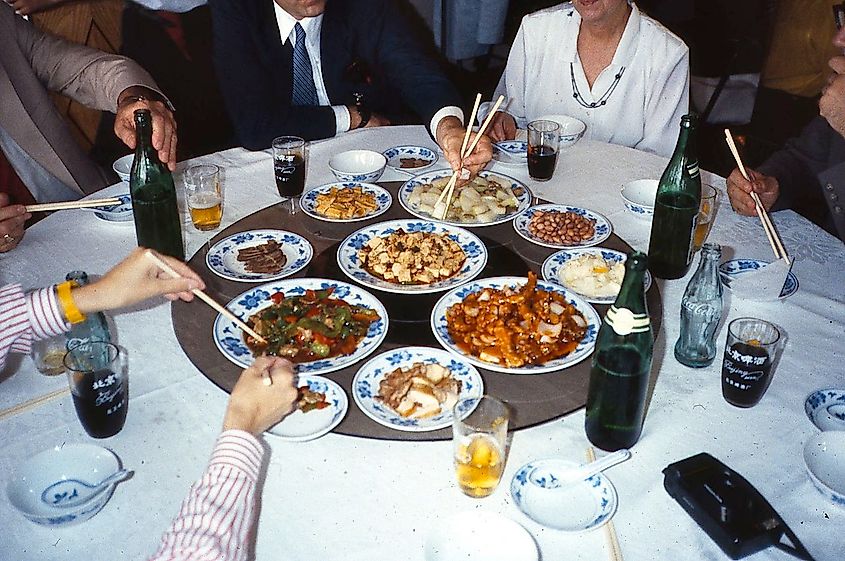
On most dining tables in China, both at home and in restaurants, you will find a rotating tray, known in English as a lazy susan. Located in the middle of the tabletop, this raised turntable, often made of wood or glass, allows for dishes of food to be easily shared among diners.
Manners, Customs, And Traditions
Family style
In China most meals are served family-style. That means diners are not served individual plates of food as is common in North America. Instead each diner receives a small bowl of plain rice, and a variety of larger dishes are placed on the communal lazy susan for everyone to choose from. When scooping a helping, choose food from the dish in front of you first, before spinning the turntable tray. This allows others across from you to choose from the dish in front of them. When serving, there are two bad habits to avoid. First, only take a small portion to ensure everyone gets a chance to enjoy the dish; and second, don’t “dig” through the plate to find the tastiest morsels. This is considered very bad manners. Once everyone has had a helping of each dish, diners may ask permission to go back in for a second or third scoop.
Tea For Two
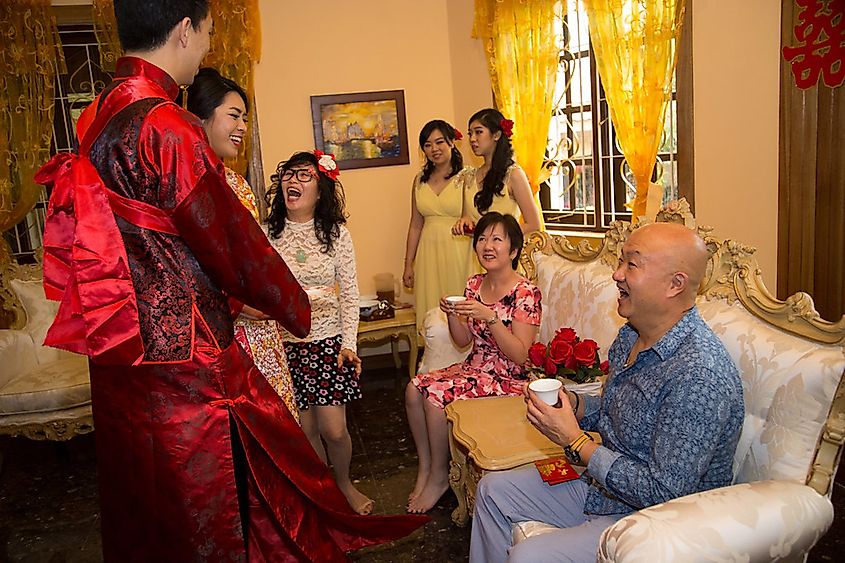
When serving yourself a cup of tea, the standard drink with meals in China, it is customary to serve others at the table before yourself. Start with the elders, and work your way through. The position of the teapot is important, too, as the spout should never point directly at another person. If the table is large or there are many people seated around it, the custom is to stand and make your way around the table with the pot rather than reaching across. The same holds true when refilling your rice bowl. Offer to refill the bowls of others at the table, starting with elders, before filling your own.
Chopsticks
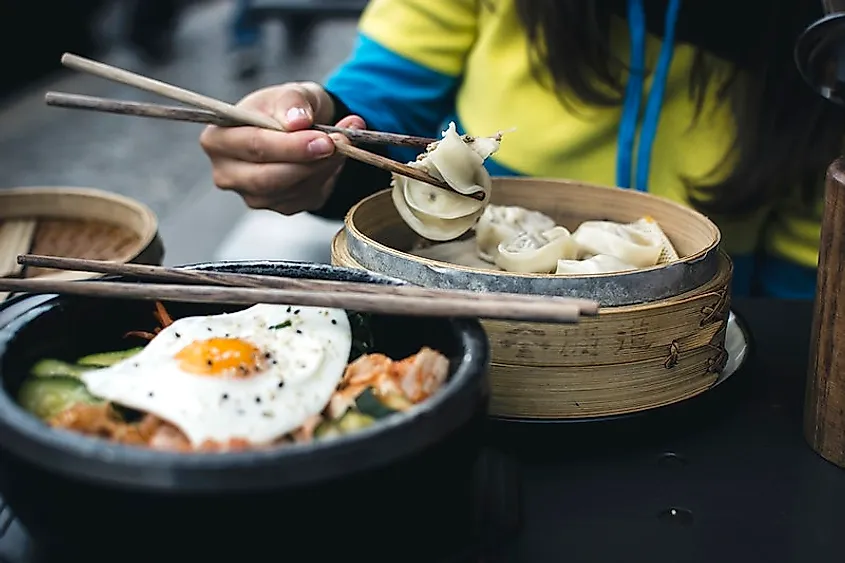
There's more to handling your chopsticks than just learning how to use them. There is an etiquette to chopstick usage that westerners are often unaware of. First, never stick your chopsticks vertically into your food. This is especially true of your bowl of rice. The reason? At funerals sticks of incense, called joss sticks, are vertically propped into pots. Using your chopsticks in a similar way is reminiscent of that tradition and considered bad luck. Next, never use your chopsticks to dig into shared plates - always use the serving cutlery provided. Finally, it is considered bad manners to wave your chopsticks around, chew or play with them, or to stab or skewer your food.
No Spoons or Knives
It is uncommon to find a spoon or a knife on the table during a meal in China. Soup is generally consumed by gently sipping it from the bowl. Knives are considered inauspicious and threaten to break the harmony of the table. It can also be seen as an insult to the chef to ask for a knife, as food preparation is done with careful consideration of shared meals and chopstick usage. Spoons, knives, and forks are available for Western diners in restaurants, however, so travellers shouldn’t feel shy about asking for them.
On The Menu
Don’t Drink Alone
Gan bei - the traditional toast in China - literally translates to “dry the glass”. When this toast is made at the table, particularly by an elder or a guest of honor, everyone at the table is expected to drink up. Failing to take a drink during a ganbei toast is considered very disrespectful and terribly rude.
Phoenix Claws
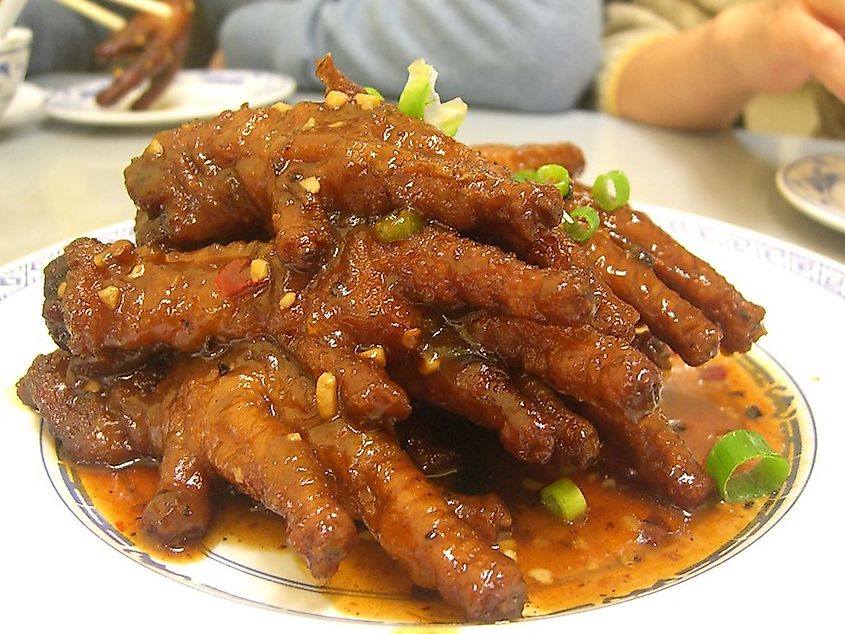
While the direct translation for this popular dish is “phoenix claws”, many Westerners are surprised when a bowl of braised chicken feet arrives at the table. This dim sum delicacy involves frying, braising, and then simmering poultry claws in sauce to transform them from tough and leathery toes into tender and flavorful feet. It’s not just the look of this dish that is startling to Western diners. Enjoying phoenix claws means cracking, slurping, and sucking every last drop of cartilage and skin from between and within the tiny bones. While these sounds might be considered rude in a Western restaurant, they are a sure sign of happy diners in China.
Other Unusual Dishes
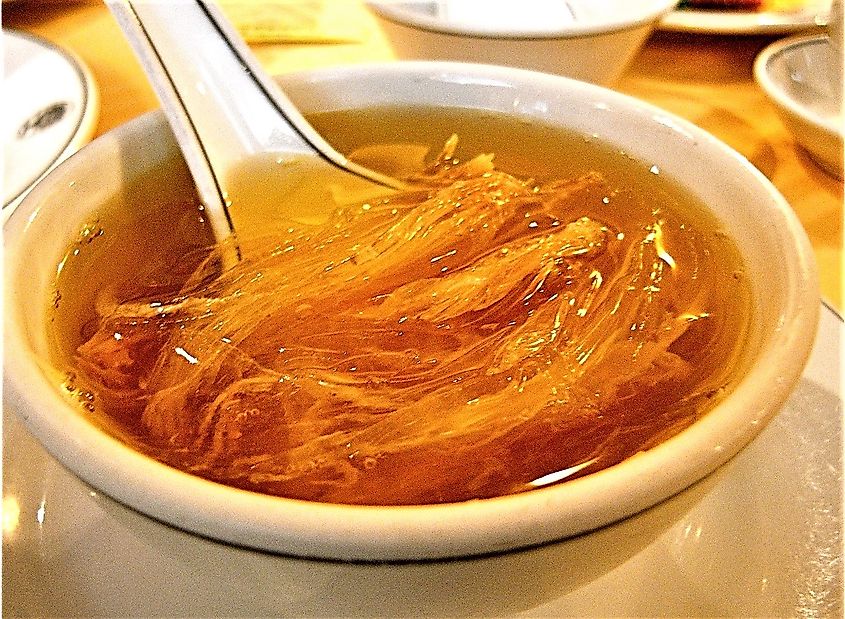
Another surprise to Westerners is the habit of Chinese cooks to use as much of the animal as possible when cooking. This means duck stomach, cow tongue, and pork intestines often make it onto the dinner table. Fish are almost always served with their heads still on, and the eyes are a particular delicacy reserved for the guest of honor. Squeamish travellers can avoid this ocular treat by offering it instead to the elder at the table. Finally, exotic delicacies such as snapping turtle, crocodile, and soups made with birds nests or shark fin can still be found at restaurants throughout China. However, bans on the sale of wildlife for consumption, and conservation efforts have resulted in a decline in these dishes.











